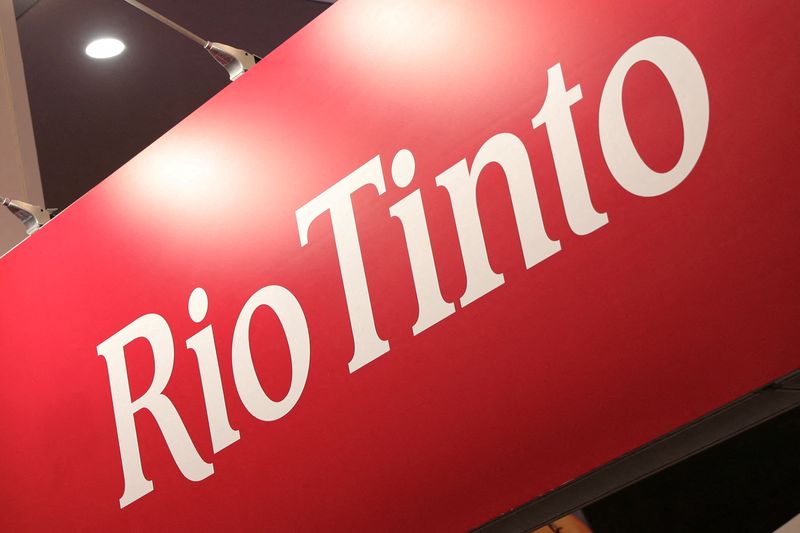Rio Tinto half-year profit meets estimates, expects good demand in China
2024.07.30 19:37
By Melanie Burton and Rishav Chatterjee
MELBOURNE (Reuters) -Rio Tinto reported half-year underlying earnings growth in line with market estimates on Wednesday as lower prices for its key commodity iron ore were offset by gains in its and aluminium businesses.
Iron ore prices tumbled about 15% in the first half as top user China battled weak economic growth stemming from a years-long property crisis, but Rio Tinto (NYSE:) said the outlook there should support solid demand for commodities.
“We see the Chinese economy growing plus or minus 5 percent and that is very good for commodity markets. You also see the U.S. growing. Not fantastic, but absolutely underpinning good markets and good demand for our products,” CEO Jakob Stausholm Stausholm told a media call.
The world’s largest iron ore producer reported underlying earnings of $5.8 billion for the six months ended June 30, compared with $5.7 billion a year ago and in line with a Visible Alpha consensus of $5.80 billion.
The miner declared an interim dividend of $1.77 per share, in line with last year’s payout, and below consensus estimates of $1.81 apiece.
Like other miners, Rio Tinto has been focused on expanding its copper division, given strong demand expectations for the energy transition metal.
Analysts at Macquarie previously said they expect Rio’s copper and lithium growth to become “an emerging strategic focus” for investors.
Stausholm said the firm’s copper equivalent production was on track to grow by around 2% for this year.
“Our ambition is to deliver around 3% of compound annual growth from 2024 to 2028 from existing operations and projects,” Stausholm said in respect to Rio’s copper output.
Rio earlier in the month welcomed the Serbian government’s reinstatement of its licence to develop Europe’s biggest lithium mine, Jadar, in a potential boost to the continent’s electric vehicle industry.
If developed, the $2.4 billion Jadar lithium project in Western Serbia could cover 90% of Europe’s current lithium needs and help make the company a leading lithium producer.

Rio Tinto’s net debt came in at $5.1 billion, around the higher end of analyst estimates, while its free cash flow was in line at $2.8 billion.
It expects capital investment in its giant Simandou iron ore mine in Guinea to accelerate in the second half from $3.7 billion in the first half.








